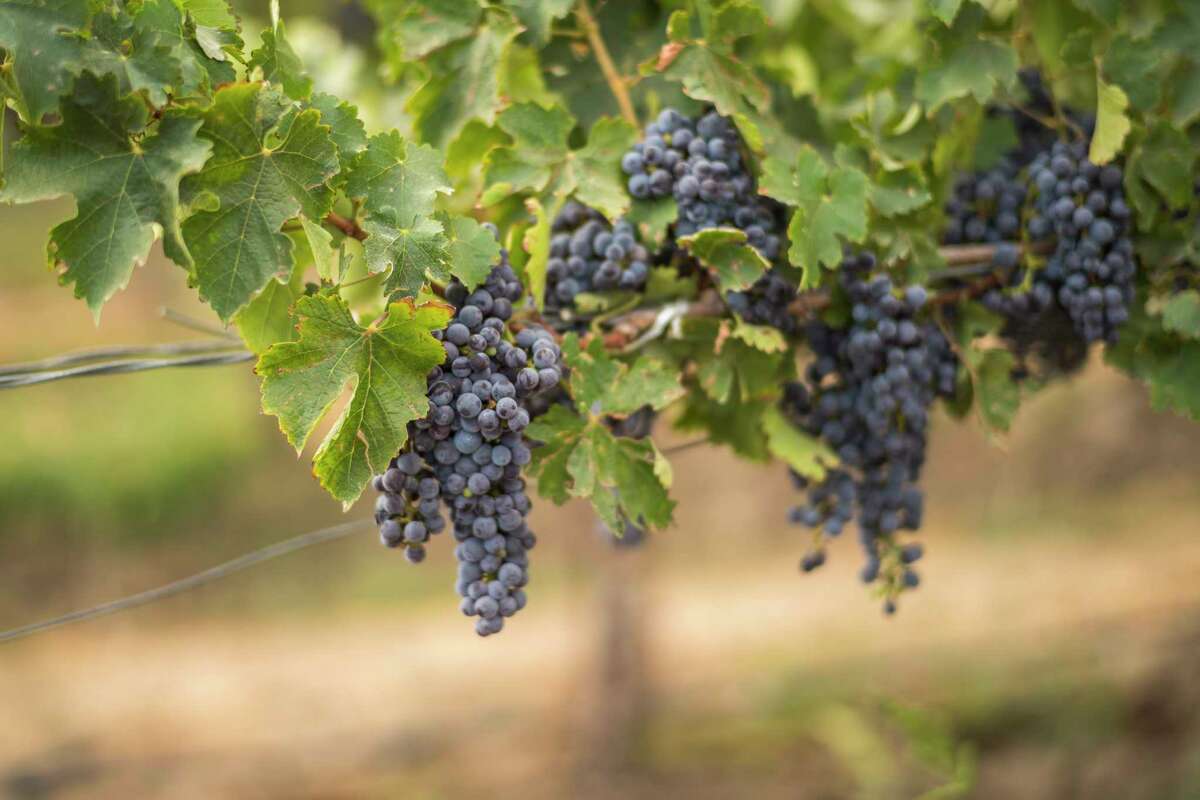Carbon sequestration, higher yields and better tasting wine?!
https://www.sfchronicle.com/food/wine/article/regenerative-farming-California-vineyards-17444507.php
This climate-friendly farming approach could also make better-tasting wine
Esther MobleySep. 16, 2022Updated: Sep. 19, 2022 9:15 a.m.Comments

In Paso Robles, one winegrower wants to prove that regenerative farming isn’t merely the right thing for the planet. He believes that this ecological philosophy can also make better-tasting wine.
Regenerative farming refers to a set of practices that are distinct — and, arguably, more rigorous — than those encompassed by more familiar sustainability buzzwords, like organic and biodynamic. By incorporating compost, cover crops, grazing animals and more, it reaches toward a single goal: to use agriculture to reverse, rather than exacerbate, the effects of climate change.
Caine Thompson wanted to introduce regenerative farming when he joined Robert Hall Winery in Paso Robles (San Luis Obispo County) as managing partner two years ago. But instead of converting the entire estate vineyard all at once, he decided to reserve a 5-acre block as a control. This smaller section would be farmed the same way it was before, using nonorganic herbicides and pesticides.
Less than two years in, Thompson said, the differences are stark. The regeneratively farmed vines yield more fruit, and its resulting wines are lower in alcohol. The grapes themselves are noticeably tastier, he believes, than those from the control block.
It’s just one vineyard, observed over a relatively short period. The findings so far are hardly definitive. “We’re trying not to get too excited,” Thompson said. “But we were so encouraged by the results.”


Regeneratively farmed grapevines, on left, and conventionally farmed grapevines at Robert Hall Winery. Nic Coury/Special to The Chronicle
Thompson is part of a growing chorus of California winegrowers advocating for regenerative farming. The movement is still small; so far, only four California wine companies — Tablas Creek, Solminer, Truett Hurst and Bonterra — have completed the certification process that allows them to print the term “Regenerative Organic Certified” on their wine labels. But the ideas that regenerative farming represents are increasingly at the center of wine-industry conversations, and many advocates of the approach say it’s the industry’s future.
Winegrowers are hardly the only ones exploring regenerative farming’s potential. The philosophy is gaining traction among all sorts of farmers, from dairy ranchers to cattle herders, and is likely to pick up even more adopters thanks to a carbon-capture tax credit in the Inflation Reduction Act, which the U.S. Senate passed in August. California has awarded more than $40 million in grants to incentivize carbon reduction among the state’s farmers. Further support for these efforts comes from nonprofits like the Bay Area’s Zero Foodprint, which generates funds via a 1% charge on restaurant bills, then uses the money to help farms transition to climate-friendly practices.
Building healthy soils is the core of regenerative farming. This is accomplished in several ways. At Robert Hall, Thompson started applying compost directly to the soils. He planted cover crops like legumes, oats, rye and clover among the vines to add biodiversity. And Thompson unleashed 500 sheep, who got to work eating weeds and cover crops — thereby reducing the need to mow or remove weeds — and pooping out some all-natural fertilizer.
The approach also encourages farmers to keep their tilling to a minimum, so as not to disrupt the bacteria and fungi living within it. Some believe this helps soil retain more water, and also — crucial for climate-change-mitigation purposes — that untilled soil can sequester more carbon, thereby reducing the amount of carbon dioxide in the atmosphere.

Those seeking the Regenerative Organic Certified status, administered by an organization in Graton called the Regenerative Organic Alliance, must also show that they treat their workers fairly. One aspect is paying workers a living wage, calculated based on an area’s cost of living. (Robert Hall is working toward the certification and expects to complete it in late 2023.) In Paso Robles, the alliance’s formula puts that at $20.31 an hour, Thompson said, higher than the area’s minimum wage of $15. To get to this new wage, Robert Hall had to increase its vineyard workers’ wages by 20%.
Indeed, as with organic or biodynamic approaches, nearly every aspect of this agricultural regimen ends up costing more than so-called conventional farming. Mixing the compost preparations, using labor-intensive discing to remove weeds rather than spraying herbicide, taking care of all those sheep — the costs add up.
But at Robert Hall, those costs are mostly negated by the plants’ increased productivity, Thompson said. He calculated that regenerative farming costs 10% more than conventional farming at his vineyard — $6,833 per acre per year for regenerative compared with $6,204 for the control block. But because of the regenerative vines’ higher yields, the farming cost per ton of grapes was actually 4% lower.
“If regenerative farming is to change the world, we can’t only produce wine for the wealthy,” Thompson said. “We need to be thinking: Can we produce wine in this way at a $20 price point?” The winery’s current bottles range in price from $18 to over $60. (The first wines produced from Robert Hall’s regeneratively farmed vines are still a year or two away from being sold to customers, and the winery hasn’t yet determined the pricing.)

What’s even more thrilling to Thompson, though, is how much better the wine tastes from the regeneratively farmed vineyards.
He first had an inkling that the wine would taste different because of how much larger the regenerative section’s canopies were than the control block — that is, the vines had more leaves.
“In Paso, when it gets so hot, those (leaves) provided little umbrellas for the fruit, so we had significantly less shrivel compared to the control,” he said. That increased sun exposure meant that the control fruit reached higher sugar levels, resulting in a higher-alcohol wine — 14.6% compared with the regenerative fruit’s 14.2%.
Once plucked from the vine, Thompson continued, the grapes themselves tasted wildly different from each other. The fruit from the regenerative side showed “freshness, vibrancy, aromatics,” he said. The control fruit tasted “ripe to the point of almost overripe, jammy, touching on stewy.”

The results from the first year were so positive that Thompson convinced Jeff O’Neill, who owns Robert Hall, to let him convert the remainder of the vineyard’s 130 acres to the regenerative protocol — while retaining the control block. Thompson believes it’s important to keep the experiment going in order to prove to other winegrowers that regenerative farming is in their interest financially.Climate change and wine
- How Roundup, the weed killer linked to cancer, became one of California wine’s biggest controversies
- Winemaking in a California heat wave: ‘It’s a roll of the dice’
Robert Hall’s parent company, O’Neill Vintners & Distillers, buys grapes from more than 200 other vineyards throughout California — 15,000 acres worth — and he’s especially keen to prove the point to them. “If we do want some of our growers to farm this way, we’ve got to understand it ourselves,” Thompson said. “Not just what effect we can have on the storage of carbon, but also cost, quality, yield.”
Undoubtedly, convincing all those growers to radically change the way they farm will take time. And it may take longer still to effectively communicate to wine drinkers what “regenerative” means — and why they might want to seek out wines made this way. But Thompson thinks it’s only a matter of time before the ever-harsher effects of climate change begin to force the choice.
“There’s a lot of rigor behind this way of farming,” he said, “but I think it could become the industry standard.”
Esther Mobley is The San Francisco Chronicle’s senior wine critic. Email: emobley@sfchronicle.com Twitter: @Esther_mobley
